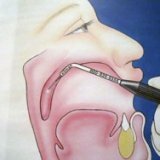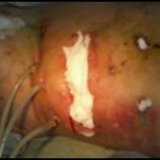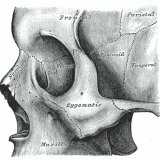Surgical treatment of snoring

According to the official statistics provided by the World Health Organization, about 35% of the adult population suffers from snoring, and in the seventh decade of life snoring all 60%.Snoring is a sound phenomenon caused by the beating of soft pharyngeal structures during the passage of a stream of air through the respiratory tract. About 30% of snoring people also suffer from apnea syndrome - short breathing stops in their sleep. And if snoring delivers only discomfort to others, then apnea leads to disruption of the heart, oxygen starvation of the brain and strokes. There are cases when apnea was the cause of death in a dream.
There is also a syndrome of obstructive sleep apnea or OSAS - a disease in which, in addition to snoring, there is a periodic decline in the upper respiratory tract and the cessation of pulmonary ventilation, as well as a decrease in oxygen levels in the blood and excessive daytime sleepiness. With this disease, up to 500 breath stops can be observed per night, which leads to such negative consequences as: hypertension, cardiac arrhythmia, stroke and myocardial infarction.
Procedure for treating snoring.
Treatment of snoring in severe cases consists in reducing resistance to air flow from the upper respiratory tract by the method of constantly creating positive inspiratory pressure or surgically.
The main component in the effective treatment of snoring is the selection of patients according to a given algorithm. At present, a method of computed tomography has been developed, with the help of which a section of air-respiratory tracts with clearly visible sites of constriction is reconstructed with high accuracy.
The main criterion for selecting patients for treating snoring using the surgical method is the apnea-hypopnea index( YAG), which shows the number of respiratory cycles whose air intake is reduced by at least 50% for 10 seconds per hour.
Classification of the apnea-hypopnea index:
- 10-20 - mild degree of obstructive sleep apnea syndrome.
- 20-30 - the average weight.
- More than 40 - very severe degree of OSA.
Surgical treatment of snoring leads to complete success only in cases of mild degree of IAG.
All methods of treating snoring are aimed at expanding the air-respiratory tract by surgically reducing the volume of tissues in the path of airflow. Classical methods of treating snoring are very traumatic, they require anesthesia and suturing on the thalamus of the nose and palate, and also characterized by great blood loss. After the operation, the patient becomes disabled for at least two weeks, and cases of a delayed complication are also very frequent. Therefore, in the last decade, the more preferred options are less traumatic methods using radio wave machines, laser and ultrasound. Below we compare these three methods.
Ultrasound treatment.
Ultrasonic disintegration of the lower shells was used in the 90s, but was ineffective and bleeding. Therefore, at the present time, this procedure was decided to be abandoned.
Laser treatment of snoring.
In 2003 in Moscow the conference devoted to laser surgery was held. At this conference the Belgian doctor presented his rather effective method of treatment. Surgical laser treatment is a vaporization, or in other words, laser vaporization of the organic tissues of the end of the tongue, soft arcs, the ends of the shells and tonsils. The choice of patients was performed among patients with snoring with mild apnea and as a result - 70% of patients remain satisfied with the result. However, the wide experience of the Belgian doctor allowed to show also the negative aspects and contraindications in laser treatment:
- increased reflexes( during the session it is very forbidden to swallow);
- small mouth;
- is contraindicated for outpatient treatment because of the possibility of opening bleeding;
A positive aspect is the speed of treatment under local anesthesia, which makes this method very simple. However, not everything is as simple as it seems for the first time. Excess temperature of the laser( over 1200 degrees) leads to severe pain, as well as necrosis of tissues and unpleasant odor from the mouth. Often there is a black and white plaque on the palate and symptoms of intoxication with potent analgesics.
Radio wave treatment of snoring.
Radio wave treatment of snoring is performed on an outpatient basis with the Ellman-Surgitron device since 1998.This device has the following advantages over its taxes:
- possibility of changing modes( coagulation, cut);
- consumes 15 times less exposure;
- is a rather large penetration depth of the electrode in the lower shell;
Technique for the treatment of Wolff Mann by radio waves.
- Three injections of 750 J in the soft palate;
- Two or four injections in each palatine amygdala;
- 7-8 jabs of 1000 J diamonds in the base of the root of the tongue;
- The total total dose is about 12000 J.
The operation is carried out in one session and under anesthesia, as a result of a decrease in IAG by 20% and a decrease in organic tissue by 50% after the first session.
But time, like technology, does not stand still, so the existing methodology has been slightly modified and improved.
The first stage of the treatment is the sinoplasty with seven injections in the palate. After a lapse of a month, the result is estimated: as a rule, normal snoring disappears in 30% of cases. If the snoring does not disappear, then a secondary procedure and subsequent sessions of sinoplasty are performed at intervals of about two months, until the patient is fully satisfied. It should be noted that after the sinoplasty, no pain was felt in any of the patients. If sinoplasty has not helped, then you should resort to uvulotomy, conducted under anesthesia and using the "jigsaw" electrode in the "coagulation + cut" mode.
Summing up all the above, we can conclude that the treatment( surgical) snoring is most effective and painless with the help of the radio wave method in outpatient settings.



